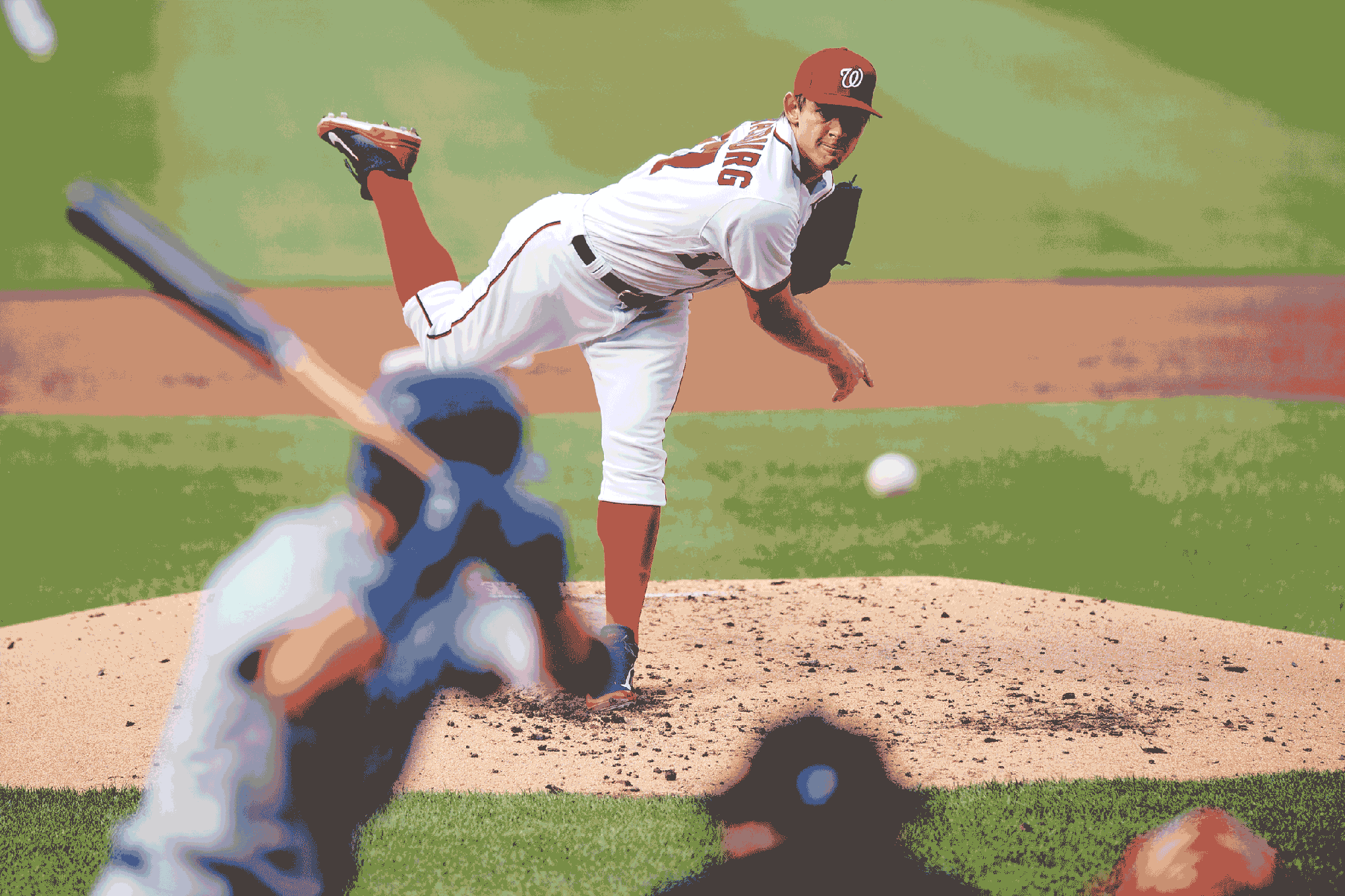The Strikeout Is Taking Over Baseball — and It’s Not Going to Stop – The Ringer (blog)
The Strikeout Is Taking Over Baseball — and It’s Not Going to Stop

The Nationals’ starting rotation is on pace to become the first in baseball history to strike out 1,000 batters in a season.
That’s a little surprising, isn’t it? Nobody’s done this before? Not the Dodgers with Sandy Koufax and Don Drysdale? Not the Diamondbacks with Curt Schilling and Randy Johnson? Or the Red Sox with Schilling and Pedro Martínez?
While an individual 200-strikeout season isn’t that unusual — there have been 160 of them since 2001 — getting five pitchers to average 200 strikeouts among them, in the same season, for the same team, turns out to be unprecedented.
It might seem obvious now, but one of the defining sabermetric advances of the past 30 years is the recognition that the best way to get hitters out is to strike them out. It eliminates the randomness of a dying quail, or an 18-hopper finding a hole in the defense, or a ball hitting a pebble and taking a weird hop for a double.
So, there are two things to take away from the Nationals being on pace to record more strikeouts than any other team in history: First, they’re good. They have the second-best rotation in baseball this year, according to Baseball-Reference, and all five starters have posted league-average ERAs or better. And frankly, it’s not shocking that a group headlined by Max Scherzer and Stephen Strasburg has turned out to be one of the best in baseball.
Second, and more important, this piece of trivia tells us less about the Nationals than it does about baseball as a whole. Despite the numbers, the Nationals don’t have the best pitching staff in the history of the game; they happen to have a very good pitching staff at a point where strikeouts are more common than ever before.

Almost every macrolevel statistical trend in baseball is cyclical: walks, hits, runs scored, and stolen bases have all gone up and down and back up again over the course of the past 150 years. The exceptions are errors, which have decreased steadily as training and equipment have improved; home runs, which have increased over history as a whole but still fluctuate over any period of, say, 20 years; and strikeouts.
Strikeouts have increased on a pretty much linear trajectory since 1900, with two exceptions: the end of the first dead-ball era (around 1920) and the end of the second dead ball era (around 1976). In 2016, the MLB average K/9 is 8.1, the highest ever. In 1993, it was 5.9. The last time MLB didn’t set or tie the all-time record for average strikeouts per inning was 2007, when big league pitchers came together to post a collective 6.7 K/9.
Let’s put this in historical context: From the founding of the National League in 1876 until the end of World War II, only three pitchers qualified for the ERA title and struck out 8.1 batters per nine innings. Then when Bob Feller did it in 1946, he was hailed as a generational talent, a quantum leap in hard-throwing strikeout artists. From 1900 to 1999, a qualified starter posted an 8.1 K/9 190 times. From 2000 to 2015, it’s already happened 290 times. Bob Feller is the new normal. Walter Johnson’s career high of 7.6 K/9 is below average. His career average of 5.3 would be unsustainable.
The 23 percent increase in strikeouts over the past decade represents an almost fundamental alteration of the way the game is played. Every relief pitcher now throws 97 miles an hour with a swing-and-miss slider. Imagine someone like Noah Syndergaard, a starting pitcher who can hold triple-digit velocity into the seventh inning and throw a 93-mph slider, showing up on the mound in 1985. And while Syndergaard might be a one-off science experiment, Matt Bush throws a 93-mph slider, too, and he’s a converted infielder who spent the past three baseball seasons in prison.
This is an industry-wide phenomenon, and it represents a Malthusian problem for organized baseball.
Strikeouts are the be-all and end-all of pitching, the silver bullet, and so individual pitchers and teams pursue them to an extreme extent. As much as the game has changed in the past 10 years, the progression has been so gradual that things still feel relatively normal at 8.1 K/9, but that’s not going to last forever. I fear that what we’re witnessing is baseball’s equivalent of petroleum demand outstripping supply. Without deliberate collective action to use less oil, we’re all going to wind up living out Mad Max. And without deliberate action, baseball’s runaway dependence on strikeouts will also lead to a barren, dystopian future.
In the next few years, we’re likely to see a world in which strikeouts are more common than hits (while strikeouts are up to 8.1 per nine innings, hits have more or less held steady since 2010 at 8.7). It’s possible that strikeouts will one day become more common than outs on balls in play. What does baseball look like as an entertainment product at 13 or 14 K/9? What does it look like as a competitive enterprise? When does it just start to feel weird?
Unlike the home run boom of the 1990s, there’s not really an easy rule change that could bring the game back into balance, either. Maybe shrinking the strike zone a little would work, or maybe that would just replace strikeouts with walks, which might not even be that much of an improvement. Maybe we eventually get to a point where the mound gets lowered again — I really don’t know what the solution is. But in a world where a single team’s starting rotation is on pace to strike out 1,000 batters in a season, we either need a solution, or we need to make peace with the idea that there’s no going back.






